The brown-spirits boom is worldwide. The quality and diversity of whisky distilled across the globe have never been higher.
Consumers have caught on. U.S. drinkers who first tried whiskey through the red-hot bourbon movement are now expanding their palates by exploring through Scotch, Irish, Canadian and Japanese expressions. Millennials in particular, flavor-curious and brand-disloyal, are eager to experiment with spirits from outside of their country.
Which has led to growth across the board for imported whiskies. This would not be possible, however, if foreign brands did not offer an eclectic array of modern products that can satiate the U.S. consumer thirst for variety and quality. All this innovation from the worldwide category means that the future for imported whisky is as bright as ever.
Scotch Seeks Millennials
What’s old is new. Scotch has moved beyond its prior stigma as the dusty bottles your grandpa drank. Now, Millennials are interested.
Especially in single malts. While declining sales of cheaper blends and lower-end brands contributed to a 0.3% decrease in overall U.S. Scotch sales last year, down to 9.25 million 9-liter cases (following larger losses of -1.4% and -4.4% in 2016 and 2017, respectively) sales for single malts were up in 2018. This subcategory grew 5.2% to 1.96 million cases. (Unless stated otherwise, all stats in this article come from the Beverage Information and Insights Group, sister data group of Beverage Dynamics.)
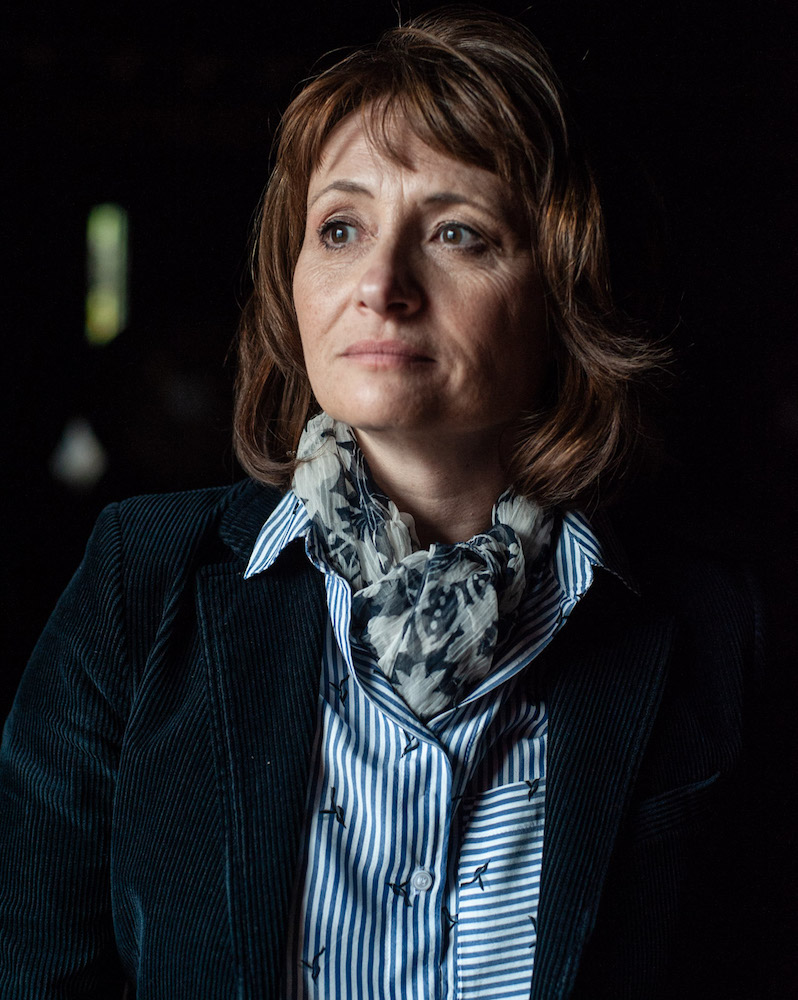
Single-malt brands have achieved growth by reaching out to younger LDA drinkers.
One way is through savvy cross marketing. Diageo generated a hefty amount of sales and social media impressions in fall 2018 through its collaboration with HBO and Game of Thrones. Together they released a series of limited-edition Scotches tied into the show’s final season. Numerous excited fans tracked down these bottles and posted pictures of their purchases on social media, creating immense buzz, while also linking these brands to one of the most popular TV shows among Millennials. It was a true win-win.
Diageo ran a similar marketing campaign in 2017, when Johnnie Walker released a limited-edition bottle inspired by the film Blade Runner 2049. That and Game of Thrones are part of the company “exploring unique partnerships that bring next level offerings to both spirits and entertainment enthusiasts alike, and developing new liquids for whisky enthusiasts,”explains Sophie Kelly, Diageo senior vice president of whiskey portfolio.
To reach younger consumers, creating cultural relevancy is key.
“It’s critical our brands are offering value to consumers in the form of relevant liquids and unique experiences,” Kelly adds. “Johnnie Walker has connected with these new audiences by tapping into important cultural conversations, like Jane Walker initiatives aimed at supporting women’s progress, or the previously mentioned Game of Thrones-inspired Scotch whiskies celebrating the show’s final season.”
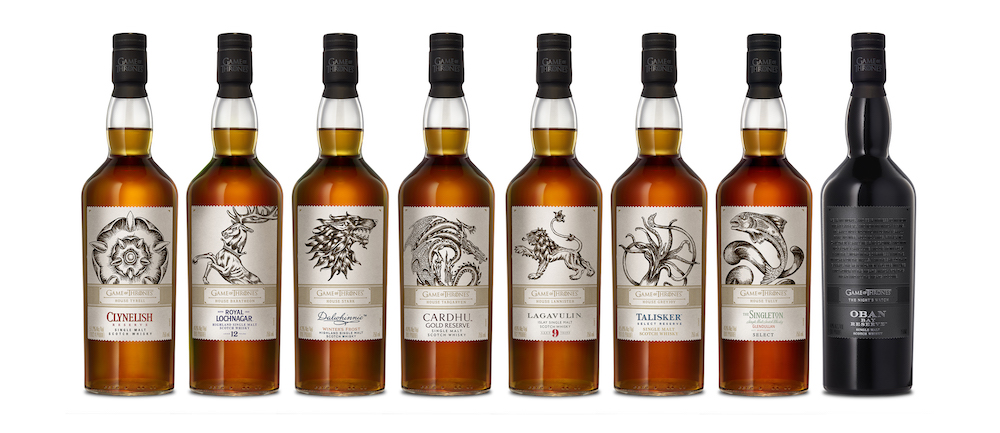
These brands demonstrate cultural awareness. They tap into what younger consumers care about, in terms of both social and charitable interests. Diageo’s Talisker single malt is distilled on the Scottish coastline, and thus supports initiatives that help clean the world’s oceans. Or consider The Singleton, which “focuses on cocktail mixology, outdoor and food events,” Kelly says, “all spaces we know are growing with the Millennial audience.”
Brands have also reimagined their packaging to appeal to younger audiences. The Glenlivet, founded in 1824, recently rolled out new branding as part of a larger effort towards “opening up the single-malt category to a new generation of consumers.” The new packaging is “bright and bold,” the company says, and “challenges the historically traditional category by leveraging the power of color to inject modernity and energize the portfolio.”
Other classic brands like The Macallan have developed deep digital connections. “Leveraging social media for Scotch education is a top priority,” Samantha Leotta, The Macallan brand director, told Beverage Wholesaler in a recent interview. “We partner with like-minded social influencers, photographers and enforce a 360 marketing approach into all of our campaigns to ensure that we are keeping social media top of mind.”
This includes opportunities for consumer education. “We developed at chatbot on Facebook that offers brand facts and bottle suggestions depending on your taste or occasion,” Leotta adds. “We’ve also created AR apps, VR experiences and touchable videos to coincide with product launches and brand initiatives.”
Once younger drinkers discover Scotch, they’ll find it has the diversity to match their ever-curious palates. So argues Rachel Barrie, master blender for Brown-Forman’s BenRiach, GlenDronach and other Scotch brands.
“Millennials are embracing the diversity of malts,” she says. “Scotch is one of the most diverse spirits in the world. Millennials want to embrace diversity. Everything about single malts is absolutely in line with my impression of how open-minded and diverse-thinking people are becoming.”

Because consumers today prefer product diversity and bolder flavors, Barrie also sees Scotch returning to classic styles. “The way the whisky world has been the last 10-to-20 years has been about blends and lighter malts. Now it’s becoming more about malts with a rich, strong and complex structure,” she says. “Some distilleries have moved away from that traditional style, but we are true to it at GlenDronach, and that’s why people appreciate the whisky. It’s like Scotch from the ‘60s and ‘70s, with richness instead of lightness or simplification.”
As Scotch flavors change and adapt with today’s consumers — while also taking into account shortages in aging stock at many distilleries — we are seeing more brands launch premium-level, non-age-statement blends.
“In general, the Scotch industry is moving to innovate beyond the aged single malt, and distilleries are embracing this by creating outstanding ‘No Age Statement’ whiskies — or, flavor-led, as we like to refer to them — with unique barrelings that yield interesting and distinctive flavor profiles,” says Ivan Hidalgo, managing director Scotch and Irish whiskey at Beam Suntory.
“In turn, this innovation should continue to drive growth in the category and increase U.S. market share over the next several years, as consumers gain awareness and appreciation for Scotch via increased opportunities for exposure and trial, especially with a younger demographic,” Hidalgo adds.
It might just be that Scotch has found a new generation.
Canadian Whisky Diversifies
Canadian is by far the largest category of imported whisky in America. It nearly doubles Scotch, and quadruples Irish. Canadian grew only 0.1% last year to 16.87 million 9-liter cases, following gains of 2% and 2.8% in 2017 and 2016, respectively.
Crown Royal dominates. The Diageo brand was up 4.5% in 2018 for a total of 6.34 million cases, more than triple the next biggest brand, the U.S.-bottled Black Velvet of Constellation Brands, which was down 2.6% to 1.9 million cases.
Crown Royal has captured the attention of modern consumers with a reliable core product, buoyed by a bevy of flavored, limited-edition and small-batch releases. These are “answering consumers’ desires for quality and experimentation, and are trending within the category,” explains Kelly of Diageo. “In fact, last year the flavored whisky category posted a growth of about 8%.”
To that end, she reports double-digit growth, year over year, for Crown Royal Regal Apple, while Crown Royal Vanilla was the “highest-scoring new product Diageo has ever put into taste testing.”
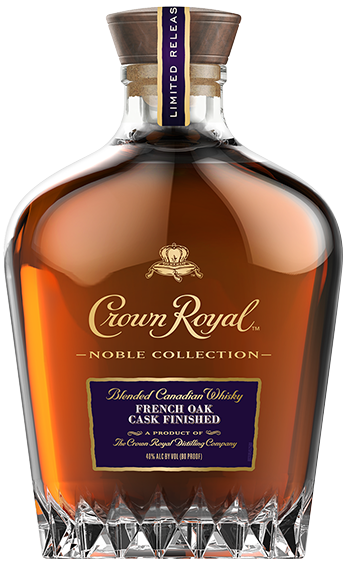
Satisfying the connoisseurship component of whisky culture, Crown Royal continues to expand its Noble Collection of high-end offerings, most recently with its French Oak Cask Finished.
As much as U.S. consumers today care about craft and quality, so too do they support brands that they can feel good about. Positive cultural impact, as stated earlier, remains important.
“With initiatives such as The Crown Royal Purple Bag Project, which aims to send one million care packages to troops serving overseas by 2020, as well as The Crown Royal Water Break, a movement that encourages responsible game-day consumption within the professional football space, Crown Royal is committed to bringing new and generous experiences to consumers in ways that may not traditionally be associated with the whisky category,” says Kelly.
As the craft movement spreads worldwide, Canadian whisky has become increasingly diverse. Behind these category innovations are the country’s liberal rules for distillation and production.
“All we must be is made of grain, fermented, distilled and aged in Canada, and aged in a wooden barrel of less than 700-L. for a minimum of three years, and be more than 40% ABV,” explains Dr. Don Livermore, master blender at Hiram Walker & Sons Limited. “We are not told we have to use a mash bill – like bourbon. We are not told how to distill. Pot still. Column still. The choice is ours. And we are not told what barrel types we can use. New wood. Used wood. Wine barrels. Rum barrels. The choice is ours. That makes Canadian whisky diverse. Isn’t that Canada?”
Dr. Livermore hastens to add that Canadian whisky is much more than just different variations of rye: “Often, I ask this question in master classes: what is the main ingredient to the dish curry chicken? Surprisingly, a lot of people will say, ‘curry’. But the fact remains is that chicken is the main ingredient. Similarly, to Canadian whisky, corn is traditionally the main ingredient.”
“To further explain, Canadian Whisky is the opposite of bourbon,” Dr. Livermore continues. “We ferment corn, rye, wheat and barley separately. We distill them separately. We age them separately. We put the ingredients together at the end based on grain type, distillation method, barrel type or age. This is a recipe. Because of tradition, and because of our climate, the early whisky barons found that they could grow rye in the Canada. Rye is hearty. It can grow in sandy, rocky, or swampy soils. It won’t grow past 25 degrees Celsius [77 degrees Fahrenheit]. Early Canadian life did not have much of their lands cultivated, so the whisky producers would import U.S. corn for most of their grain, but they would also utilize all the land they had and found that rye could grow in our environment. Rye was the spice to our whisky, just like barley is the spice to Irish whisky and Scotch whisky.”
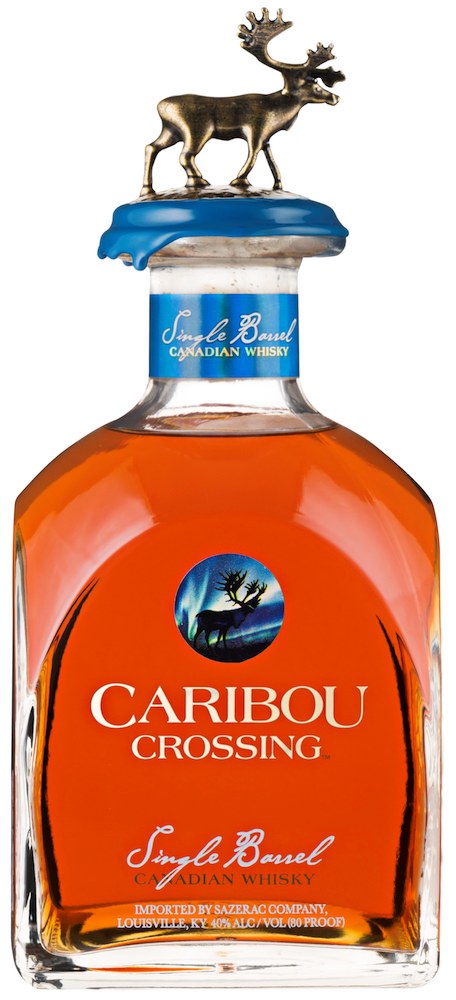
The end result is a category that has become as diverse as ever.
“Canadian Whisky is enjoyed by consumers across a wide range of demographics and regions,” explains Adam Wilkins, associate brand manager for Sazerac Company’s Canadian whiskies.“Its perception as an affordable, smooth, highly mixable whisky makes it an every-day choice for lots of consumers.”
“Meanwhile,” he adds, “consumers are also beginning to embrace more upscale and unique Canadian whiskies, like our Caribou Crossing, which offers a completely new take on the category. Whether you prefer a smooth and mellow whisky, or a spicy high-octane whisky, there is likely a Canadian whisky out there that meets your taste profile.”
Wilkins foresees continued innovation from the Canadian category.
“We are ourselves conducting lots of experiments in the realm of aging, finishing and blending, in hopes of bringing compelling new products to life in the years to come that consumers will find compelling,” he says. “Consumers are certainly beginning to take notice of the category, and the host of fantastic products that have been developed in recent years. As more consumers move into the whiskey space, there will continue to be greater and greater appreciation for what’s emerging out of Canada.”
Irish Whiskey Explodes With Innovation
Irish whiskey is still red hot.
The category sold 4.47 million 9-liter cases in the U.S. last year, which represented a 10% gain over 2017. Altogether that generated $1 billion in revenue for distillers, according to DISCUS — a 12% jump from the year prior. The number of Irish distilleries has doubled between 2014-2016, and now totals nearly 30.
What’s behind this growth? As with whiskey elsewhere, a primary driver is innovation.
“If you asked us this question [about innovation] six years ago, it would be a simpler answer compiled of sherry casks or perhaps some wine casks,” says Tony Carroll, global brand ambassador of Knappogue Castle Irish Whiskey. “But nowadays it’s become a lot more open-minded and experimental.”
“We now see Irish whiskey finished in Japanese Mizunara casks, Bordeaux /Pichon Baron Casks and Virgin Hungarian Oak, etcetera,” Carroll adds. “This of course leads to variety and curiosity for the consumer, which is a winning strategy for whiskey producers. It also allows the consumer to develop their whiskey palates and become a more confident, knowledgeable participant.”
In turn, this innovation trend has helped fuel the premiumization of Irish whiskey. Consumers have not hesitated to open their wallets for these pricier whiskeys that deliver on top-notch quality.
“In the last 15 years, the quality of Irish whiskey products has increased exponentially,” says Dan Liguori, VP and GM at Mark Anthony Crafted Spirits.The company’s portfolio includes the premium Irish whiskey brand Glendalough.“That’s what the consumer is looking for now: quality. That’s elevated a category that was perhaps thought of as a commodity before, and now is premiumized.”

The Glendalough lineup includes their 13-year-old single malt finished in Japanese Mizunara casks, which retails for between $80-$100. The distillery also sources Irish wood for casks from the nearby Wicklow forest. “The authenticity and terroir we have in the Wicklow forest — it’s great to use sherry and Japanese Mizunara with Irish whiskey, but we do also have something innovative our own backyard,” explains Liguori.
As Irish whiskey reaches heights last seen before Prohibition, and new distilleries increasingly open up, one can wonder: is there enough room in the market for all these producers? Or will Irish whiskey become oversaturated?
The brands do not believe so. Rather, they see opportunity for greater growth.
“Ultra-premium is a huge market we could tap into,” says Sabine Sheehan, global brand ambassador for Lambay Irish whiskey.
“Matching supply to that demand is a huge undertaking, but we do have a lot of young distilleries now coming online.”
Just look at the math. Canadian whiskey currently totals around 16 million cases annually in the U.S. That’s about four times the 4.7 million cases of Irish whiskey sold last year.
“I think there’s still a lot of room for growth,” says Liguori of Glendalough. “When you look at Irish whiskey in the U.S., it’s still a relatively small category. There’s still tremendous room for growth from a volume standpoint.”
“I don’t think the double digit-growth tide will ebb anytime soon,” he adds. “I anticipate more growth along that trajectory.”
Not everybody is convinced of this rosy outlook, however. Mike Ryan, director of bars for Kimpton Hotels & Restaurants, believes that the current growth track of Irish whiskey is unsustainable.
“I think a lot of brands are looking at the growth of Jameson and some smaller brands and thinking they can grab that momentum themselves,” Ryan says. “But unless there’s a driving market force brand, like Connor McGregor’s Proper No. Twelve, that can transcend everything, I don’t think the market can sustain that level of growth, and we will see a pull back in the next five years.”
To Ryan’s point, the category’s 10% growth in 2018 follows greater gains in 2017 and 2016, of 12.2% and 15.9%, respectively.
Japanese Whisky: Elusive, Hot, Growing
Japanese whisky has become so trendy in America that its’ often difficult to track down these bottles.
“To put it in perspective, Japanese whisky is up over 40% in volume in 2017 alone, a figure which does not even begin to represent the true unconstrained demand for the whisky in the market today,” says Rashidi Hodari, VP of marketing for House of Suntory.
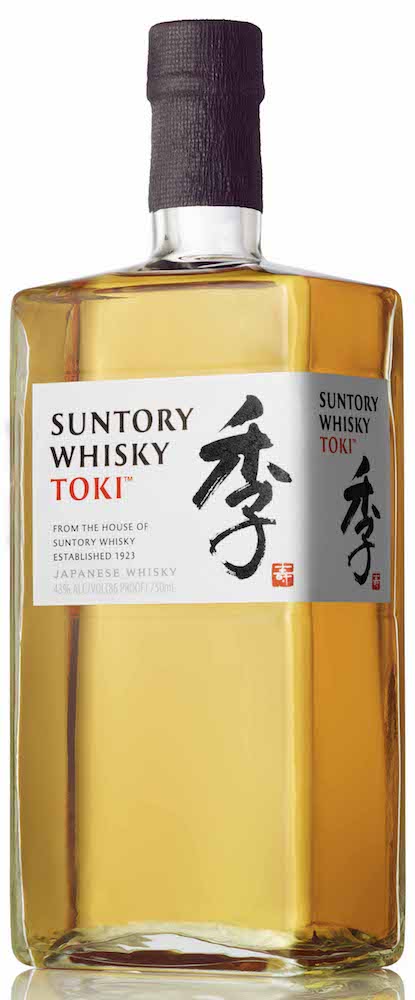
The brand did help broaden the availability of Japanese whisky with the launch of Suntory Whisky Toki in 2016. At a suggested retail price of $40 per 750-ml. bottle, this expression was “created to be the ideal Japanese whisky for the Japanese whisky highball and to be used in cocktails,” explains Hodari. “It has become one of our most popular whiskies, readily found at bars, restaurants and at retail.”
The brand has backed up this cocktailing push by rolling out Suntory Toki Highball machines in accounts around the country. When comparing Japanese whisky with other categories, often people suggest a similarity with Scotch. After all, the flavors and production methods can be relatively alike. But dig deeper and differences emerge.
“They are both distilled in copper pot stills using malted barley, and some say they are close in flavor because of the history of Japanese whisky-making. But they are distinctly different in production, style, flavor and texture,” explains Hodari.
“Single malts are 100% malted barley whiskies made at one distillery,” he adds. “In Scotland, each distillery (usually) makes just one type of whisky in one type of pot still. At Yamazaki, for example, we have seven different types of pot stills, so we can produce many different styles of whisky in our own distillery.”
But can Suntory and its various brands (and competitors) produce enough whisky to meet the escalating consumer demand for Japanese product? Hodari remains hopeful.
“We are able to meet this demand by continuing to release a range of offerings, including limited edition expressions, and new blended innovations such as Suntory Whisky Toki and Hibiki Japanese Harmony – both of which consist of a wide range of aged single malt and grain liquids to produce the perfect balance and flavor profile.”
Craft Whisky is Now Made Worldwide
The brown spirits boom has taken root in countries not traditionally thought of for whiskey. Kavalan in Taiwan has earned global accolades in recent years, while other brands have popped up in India, France, Israel and elsewhere. As U.S. consumers explore through more-typical styles and origins of whisky, they have also become interested in brown spirits from off the beaten path.
A recent example of this is Starward, an Australian single malt brand that recently launched in the U.S. (see page 34). The Melbourne company ages its spirit in Australian red wine barrels. This gives the whisky a strikingly aromatic nose, says Starward Founder David Vitale, “a whole heap of fruit, with berries and jammy characteristics, and a luscious mouthfeel.”
Using these unique barrels helps differentiate Starward on the global stage. “As my mentor told me, you cannot out-Scotch Scotch, but you can march to the beat of your own drum” Vitale explains.

Overall there are about 20 distilleries in Australia that currently sell products, with about another 10 in the earlier stages of opening up. Because of the global craft movement, consumers worldwide are not as nervous anymore to try a single malt from Australia, Vitale says.
“We want to thank Japanese distillers for that,” he adds. “The consumer at last has been made aware that there’s a whole world of whisky outside of Scotch.”
Kyle Swartz is editor of Beverage Wholesaler. Reach him at kswartz@epgmediallc.com or on Twitter @kswartzz or Instagram @cheers_magazine. Read his recent piece, 11 Alcohol Trends to Watch in 2019-20.
Feature photo by Adam Wilson on Unsplash.









